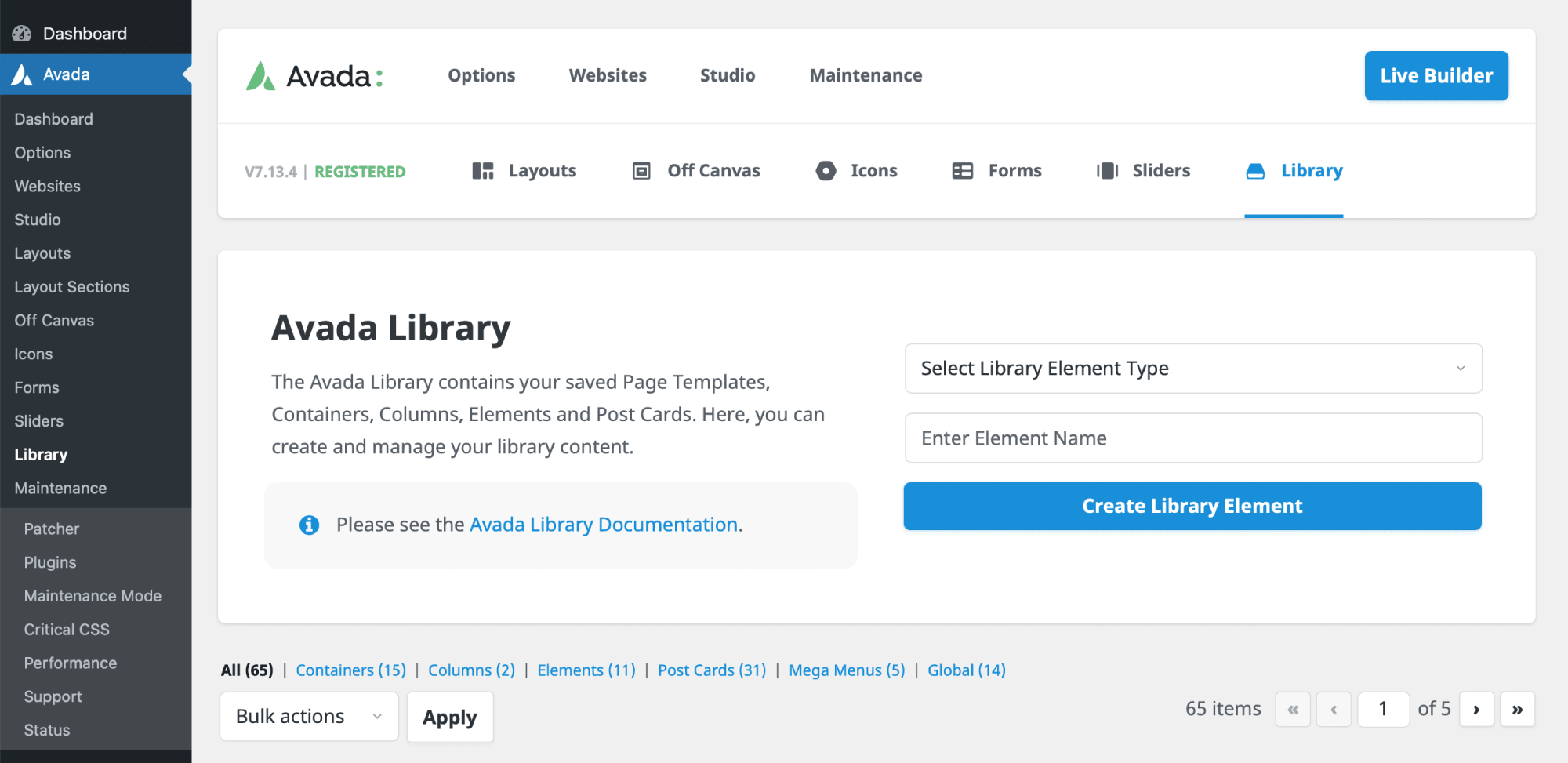Guía completa para importar y exportar contenido de la biblioteca del Avada Builder
Este es un resumen del artículo. Si necesitas contexto adicional, aquí tienes el enlace original: https://avada.com/blog/how-to-import-export-avada-builder-library-content/
If you’ve ever built something great in Avada and thought, “I wish I could use this on another site,” — good news! You can.
In this quick guide, we’ll walk you through how to import and export Avada Builder Library content. It’s super simple once you know where to look.
Overview
What Is the Avada Builder Library?
Think of the Avada Builder Library as your personal design vault inside Avada. It stores all your saved Page/Post Templates, Containers, Columns, Design & Layout Elements, Avada Post Cards, and Avada Mega Menus—basically, anything you’ve built and saved for reuse lives here. You can find the content in the WordPress Dashboard → Avada → Library.
Here, you’ll see a list of everything you’ve saved. Maybe you have some excellent layouts, custom sections, or reusable content blocks. And if you’d like to use them on another Avada website, that’s where importing and exporting come in.
For a detailed overview of how to use the Avada Builder Library, please see this article.
Exporting Avada Builder Library Content
Let’s start with the export process — that’s how you get your saved designs out of one Avada website.
Here’s what each one does:
Now you’ve got your saved items exported — two neat little XML files on your computer, ready to be imported into another Avada site.
Importing Library Content to Another Avada Site
Let’s switch over to the new Avada site where you want your content to go.
You’ll get a “Content successfully imported” message once it’s done. Repeat the same process for the other XML file (the one with your templates or other saved items).
What Are The Benefits?
Importing/exporting Avada Builder Library content isn’t just a neat trick—it’s a real workflow booster. Here are the biggest wins for web designers using Avada and WordPress:
Practical Examples
Pro Tips for Smooth Workflows
Summary
And that’s it! You’ve successfully exported your Avada Builder Library content from one site and imported it into another. This is a fantastic way to reuse your designs, save time, and keep your branding consistent across multiple websites.
Puedes consultar el artículo original aquí: https://avada.com/blog/how-to-import-export-avada-builder-library-content/
Este contenido ha sido generado automáticamente con el plugin Autoblog AI. Desarrollado por Zonsai.



